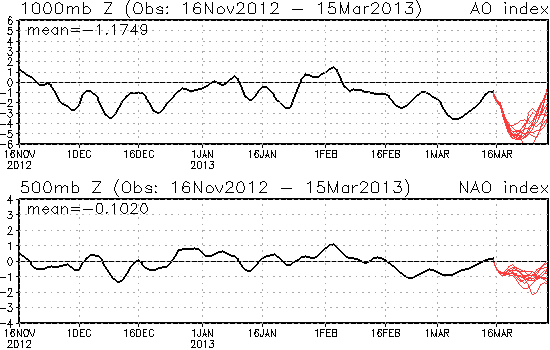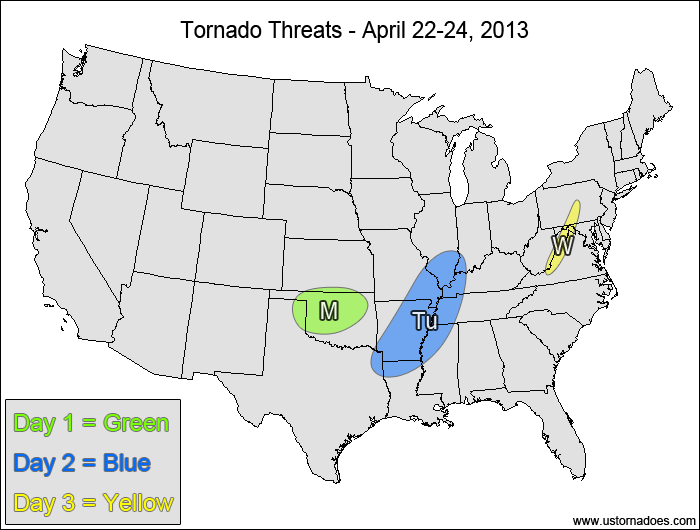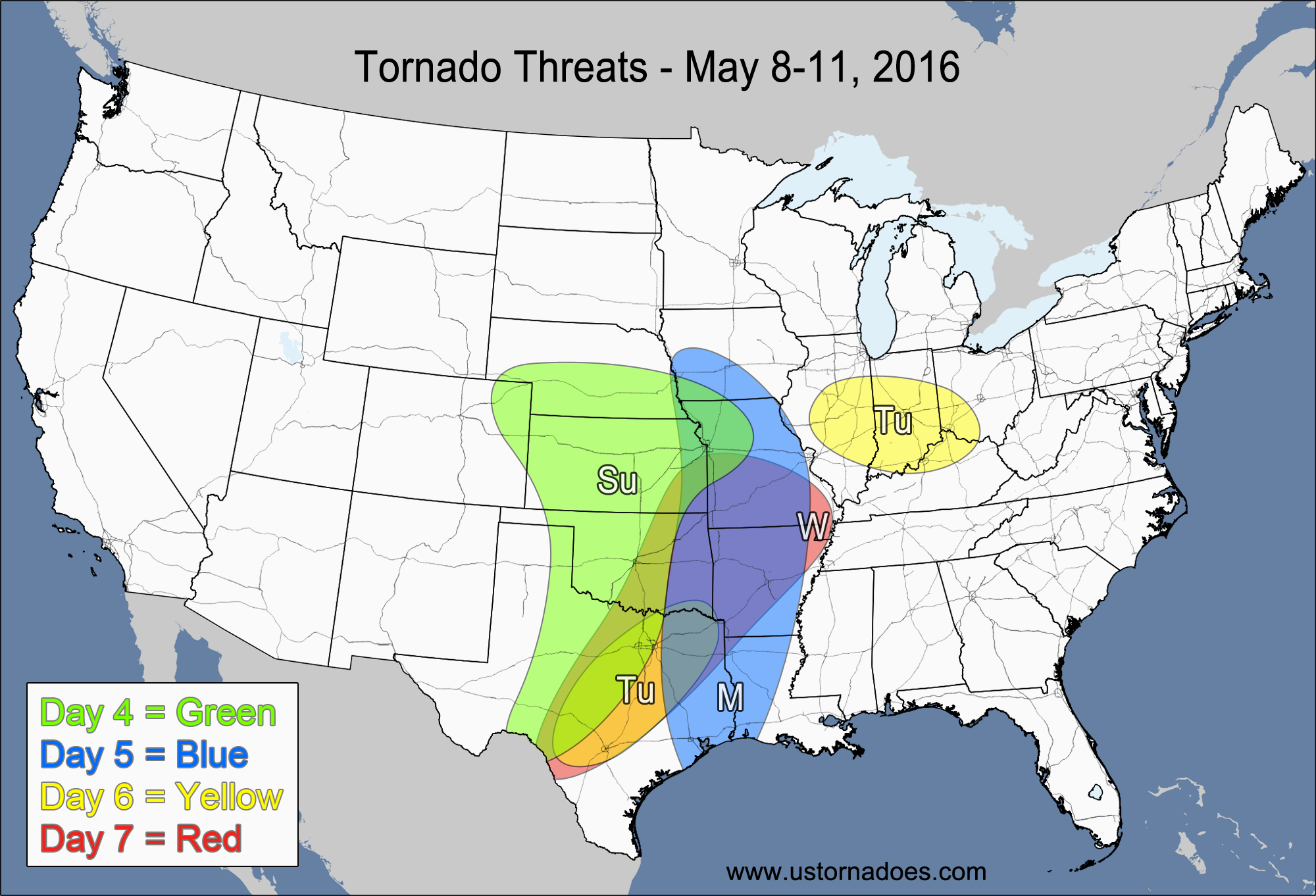The first half of March is coming to a close with just one confirmed tornado that occurred in Georgia back on the 5th. As was mentioned in the spring tornado forecast, this quiet period was due to upper-level ridging in the western U.S. and troughing over the eastern U.S., which brought in dry air from the north and cut off much of the Gulf moisture from getting into the U.S. It is very difficult for tornadoes to form in this type of setup with little to no access to the moisture and instability the Gulf air provides.
Looking forward to the next week or so, the Gulf does try to open up some across the southern Plains and southeastern U.S. as adjustments in the Pacific/western U.S. pattern allows upper-level systems to dig further south before reaching the Plains. That being said, getting this often-crucial ingredient does not necessarily mean tornadoes are on the way.
The Arctic Oscillation (AO) and North Atlantic Oscillation (NAO) teleconnections have taken a brief reprieve from their strongly negative phases, but they are looking to reload for the second half of March. The AO is currently projected to head towards historically low values for the month of March, which is indicative of strong blocking over the Atlantic and will hinder the development of tornado-producing systems. The NAO will follow suit and head back into solidly-negative territory.
While these appear to be the dominant signals over the U.S. for the back half of March, they are not the end-all to the forecast. One of the more notable wildcards is the Pacific-North American (PNA) Pattern, which when in its negative phase indicates that upper-level systems could dig further into the southwestern U.S. This scenario is sort of playing out over the next week to ten days, and it will introduce at least some tornado potential into the forecast.
While the -PNA does offer some hope that the pattern could be more active than what we have seen so far this month, I am treating it as more of a risk to the overall pattern instead of one of the main drivers. This leads me to conclude that the second half of March is more likely than not to be quieter than normal, with some risk that there could be more activity if other signals like the -PNA can counteract the strong -AO/-NAO.
Latest posts by Mark Ellinwood (see all)
- Spring 2023 seasonal tornado outlook - March 1, 2023
- Spring 2022 seasonal tornado outlook - March 1, 2022
- Spring 2021 seasonal tornado outlook - March 1, 2021



